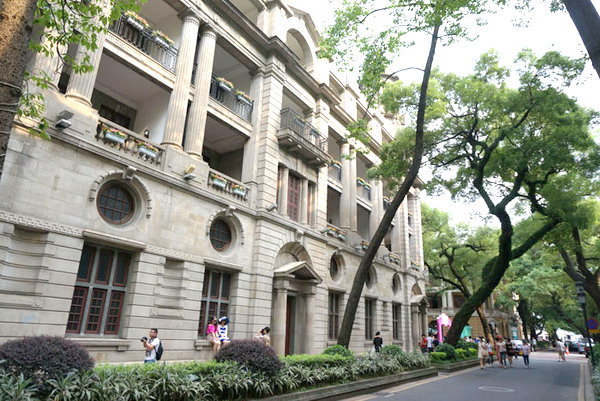 |
|
European architectural style buildings stand on each side of the street on Shamian Island. |
Construction of the 21st century maritime Silk Road is not only about investment, trade and economic cooperation between China and the countries and regions along the road, but also about people-to-people communication and cultural exchange.
Tourism is an effective way to promote people-to-people communication and cultural exchange. Guangdong province, an important player of the national strategy, has advantages in further enhancing tourism cooperation with maritime Silk Road countries and regions.
First of all, among all coastal provinces in China, Guangdong probably has the largest number of overseas Chinese population who immigrated to foreign countries from the southern China province, starting several centuries ago. Official figures available indicate that the population of overseas Chinese from Chaozhou and Shantou cities in eastern part of the province surpasses 10 million in the Southeast Asian countries. Many of them still speak Cantonese, love the Cantonese culture and pay frequent visit to their hometowns.
The overseas Chinese, many of whom are second or third generations, act as a bridge connecting China and their residing countries, promoting trade, investment, economic cooperation and cultural exchange.
Second, Guangdong played a very important role in the country’s ancient maritime Silk Road. Chinese merchant fleet left the province’s capital city of Guangzhou, nicknamed as China’s thousand-year-old capital of commerce and trade, sailing to Southeast Asian and South Asian countries for commerce and trade during the reign of Emperor Wudi (157 – 87 BC) in the Han Dynasty. In the 13th century, Guangzhou already had trade ties with more than 140 countries and regions in the world. And Guangzhou experienced its peak of ancient maritime trade in the Qing Dynasty, trading not only with Southeast Asian countries, but also countries of Europe, North America and the Oceania.
For instance, between 1758 and 1838, a total of 5,107 foreign merchant vessels arrived in the port of Guangzhou and at the time, the city was already a major shipping hub in the world. Along with trade came cultural exchange and people-to-people communication.
Third, Guangdong is one of the largest tourism destinations and tourist sources in the country. In 2014, the province had more than 326 million overnight stays, of which more than 33.55 million overnight stays were made by tourists from foreign countries as well as the regions of Hong Kong, Macao and Taiwan. Its tourism revenue reached 922.7 billion yuan last year, a year-on-year increase of 12 percent.
Finally, the province has vowed to “play an important role in tourism cooperation with the 21st century maritime silk road countries”, according to the Tourism Administration of Guangdong Province.
Last year, the province’s tourism authority set up 17 tourism promotion centers abroad, including those in Thailand, Malaysia, Indonesia, the Republic of Korea and Singapore. The centers act as a platform for tourism promotion, cooperation, exchanges and investment attraction.
This year, the tourism authority plans to further enhance tourism cooperation with the 21st century maritime Silk Road countries and regions, including promoting tourism project cooperation, facilitating quick visa access services, and participating international tourism fairs.
I believe that closer people-to-people communication and more cultural exchanges will definitely help deepen understanding about each other and therefore help promote trade, investment and economic cooperation.